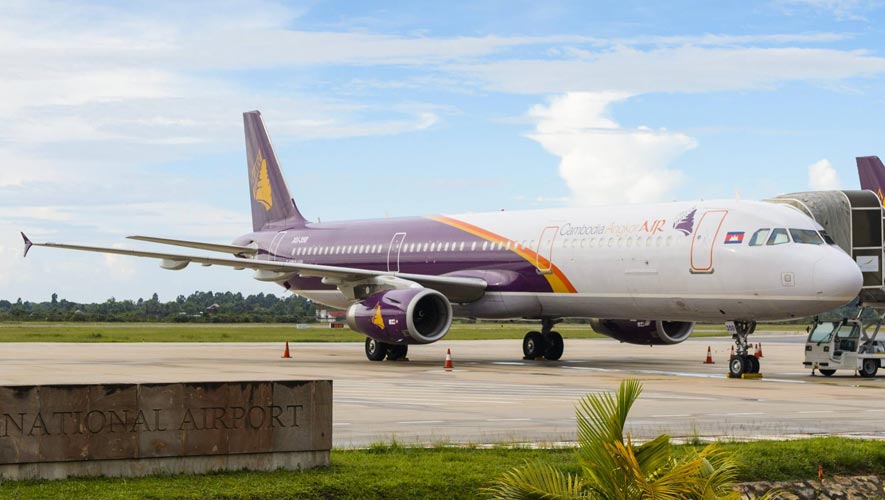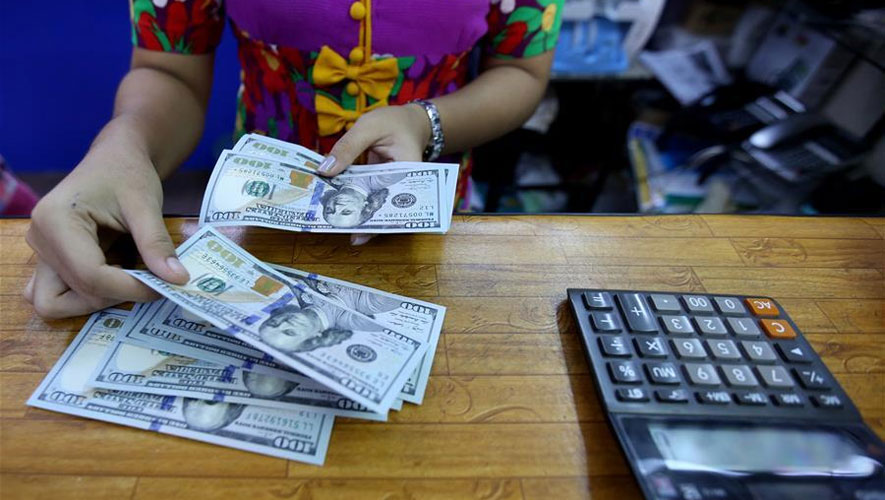Ten years on, the airline continues growing with new routes and code-shares, having beaten the odds of staying afloat early on
For the latest Cambodian Business news, visit Khmer Times Business
State-owned national flag carrier Cambodia Angkor Air is en route with expansion plans, both in routes and fleet, and a goal to breakeven in five years.
The airline is growing its Chinese market by adding two destinations, and raising codeshare agreements to providecustomers more options.
“We are flying to Shanghai, Guangzhou and Beijing but China is big. From our study, there are more than 10 big cities to explore,” says chairman Samrach Tekreth in an interview with Capital Cambodia.
The full service airline, 51 percent-owned by the Cambodian government and the rest by Vietnam Airlines, has grown organically since its inception on July 28, 2009.
Its predecessors are Air Cambodge and Royal Air Cambodge that operated between 1970 and 2001. In the 1990s right up to its cessation in 2001, Royal Air Cambodge, which partnered with Malaysia Airlines (49 percent stake), experienced nearly $30 million losses as passenger movements dropped in the heels of the Asian Financial Crisis and the September 11 terrorist attack.
Today, the airline is perhaps steadier, growing on past experience but with a new vision.Samrach, however, contends that airline business is not easy, not just in Cambodia with 10 other players including low-cost carriers, but anywhere in the world.
“If you talk about business, you must think about competition and free market economy. (But) we have experience from 2000 … so there is no question who stays or goes but this is the game,” he says. For one thing, it knows that there is no market in the domestic sector due to slow passenger growth. Most established big airlines operate different businesses such as maintenance service, cargo, duty-free, catering and ground handling, which help them stay afloat. But to focus purely on passenger transport is difficult in a country like Cambodia because it does not have a mature domestic market. A domestic market can support small airlines as seen in Thailand, Indonesia and Malaysia. Not here, though.
“If we focussed on the domestic market, we might have closed down in the first three to four years of operation. Therefore, our survival is by feeding our airline from the international sector,” Samrach says.
While its growth focus is mainly on China and Vietnam, via its partnership with Vietnam Airlines, it is also exploring India, although cautiously.
“We have to be careful and choose which city to fly to … maybe Calcutta. There are some good and weak points (of operating in India). However, as a state-owned airline, we can obtain details from the Indian Embassy before meeting the aviation authorities,” he says.
The idea of expanding to India is to bring Indian tourists to see Angkor Wat and Buddhist temples in Cambodia rather than entice Cambodians to fly to India.
“If Cambodians go to India, they would want to see Buddha’s place but I see it different. If we fly to India, we want to bring Indians to see our temples. How many Cambodians would want to go to India everyday? But not everybody would accept that explanation,” he says.

Growing via code-shares
In order to compete or sell in the international market, it needs to have resources, networking and opportunities, says Samrach. In the past though, the airline made some errors in judgment.
“We tried Bangkok for a few years and lost so much money. We decided to close down because we did not have the capacity to open any doors in Bangkok. We also tried South Korea and Hong Kong but it was hard (owing to stiff competition),” Samrach says.
Moving past that, Cambodia Angkor Air is back on track, seeing that it holds the IATA Operational Safety Audit (IOSA) certificate which gives it a competitive edge. In the next few years, the airline expects to secure code-share agreements with established airlines such as China-based Hainan Airlines Co Ltd and South Korean low-cost carrier Jeju Air.
“We have five agreements now. We are on the right track. These agreements will change us because we have the certificate which tells potential partners that we are safe and secure, particularly US and European airlines. As a flag carrier, we abide by rules, regulations, international norms and practices. Also, Vietnam Airlines as a shareholder helps the mission,” he says.
Building Cambodia into a destination
Samrach says Cambodia is usually an extension for travellers who visit Southeast Asia but not a destination. Travellers, who come to the region for two weeks holiday, usually spend their time in Singapore, Thailand or Indonesia. But that depends where the travellers come from. “If they are from Europe, Bangkok is the key destination. They would spend one or two nights here. In contrast, a Chinese traveller would stay longer in Cambodia,” he says.
“Anyway, we get at least 50 percent of the travellers who come to see Angkor Wat, which is the key promoter of Cambodia. Angkor Wat does not need promotion,” he adds. Samrach believes that in future, Cambodia can become a tourist hub because Khmer civilisation promotes Cambodia. “It would be an effort (making Cambodia the hub) but I am positive,” he adds.
The Cambodian economy is highly reliant on labour-intensive industries but tourism might be the answer to long-term sustainability.
“It is a cash cow if it’s managed right. If we get 10 million tourists per year and one tourist spends an average of $1,000 per trip, this is good income for Cambodia. Tourist money is injected immediately into the market. But to get there, we need to increase our efforts including tour operation and airport facilities,” he says.
Expansion plans, breaking even
The airline owns six aircraftsconsisting of ATR 72 (three), Airbus 320 (two) and A321 (one). During high season, planes are increased to seven or eight. The A321 flies direct to Shanghai and
Beijing via Siem Reap and Phnom Penh.
Cambodia Angkor Air plans to spend an undisclosed amount to expand its fleet to between 12 and 14 as part of its five-year business plan.
“To breakeven, we need to have 12 aircrafts. It is normalpractice to keep expanding (despite making losses) in airline business,” he adds. It is also considering alternative revenues from non-aeronautical services such as catering and maintenance but first it will wait till everything is “good” before embarking on something new, perhaps in five years.




